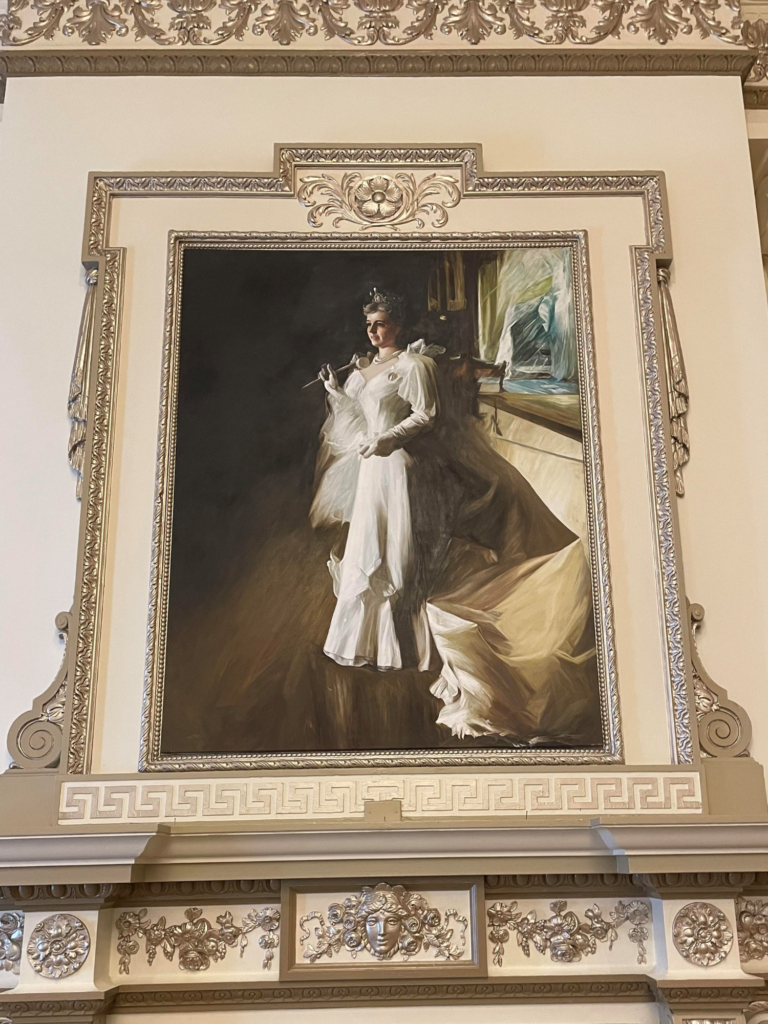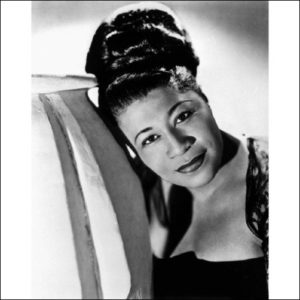By Joan Stewart, Class of 1995 and Russ Seward, Class of 2005
The Palmer House: is it only a hotel, or is it a “museum” that is also a hotel? The Palmer House story reflects the events in, and the growth of, Chicago.
 The current building at Monroe and State is the third Palmer House. The first hotel, a wedding gift from Potter Palmer to his bride Bertha, burned in the Great Chicago Fire of 1871. Potter was the developer of State Street, and his vision of State Street was as the center of the city’s main shopping, cultural, and entertainment area. The area needed a “Grand Hotel,” one designed to meet the needs of sophisticated business travelers. The opulent second hotel of 1873 was the first to have electric lights, telephones, and elevators. By the 1920s, the Palmer sons, Honore and Potter Jr., realized that a larger and more modern hotel was needed; they had it built in stages so that the original hotel could remain open during construction.
The current building at Monroe and State is the third Palmer House. The first hotel, a wedding gift from Potter Palmer to his bride Bertha, burned in the Great Chicago Fire of 1871. Potter was the developer of State Street, and his vision of State Street was as the center of the city’s main shopping, cultural, and entertainment area. The area needed a “Grand Hotel,” one designed to meet the needs of sophisticated business travelers. The opulent second hotel of 1873 was the first to have electric lights, telephones, and elevators. By the 1920s, the Palmer sons, Honore and Potter Jr., realized that a larger and more modern hotel was needed; they had it built in stages so that the original hotel could remain open during construction.
Bertha Honore Palmer was an astute social and business person. Of French heritage, she loved all things French. That influence is seen in the design of the 1927 hotel and the many French works of art within. The lobby ceiling’s 21 original paintings by French artist Louis Pierre Rigal depict scenes from Greek mythology. As President of the Board of Lady Managers for the 1893 World Columbian Exposition, Bertha championed women’s rights. She donated many of her French Impressionist paintings to the Art Institute of Chicago. After Potter died, she became a land developer in Sarasota, Florida. She left a fortune far greater than what she inherited from her husband, a testament to her business acumen.
The hotel has preserved Palmer artifacts in its own museum. It is open by appointment, but a glass wall makes much of it viewable from the Mezzanine. Begin with the huge photo of the 1873 Palmer House in the Mezzanine. Then move to the elevator foyer of the Lobby floor to see a bronze sculpture from the 1873 hotel titled “Belle Rophan” by Emile Herbert (1828-1893).
Outside Potter’s Lounge, the display cases house pieces of the French Havalind china from the 500 place settings purchased in Paris for the 1879 “Greatest Banquet in History”. The rest of the china is in the basement vault. The banquet was for former President Grant with Mark Twain as the master of ceremonies. And speaking of food–enjoy a brownie at the hotel. At the request of Bertha, the first brownie was made by a Palmer House chef to be served as a finger food at the 1893 Exposition.
Landmarked areas include all exterior elevations, including the roofline, the former Peacock store interior, Monroe entrance lobby and staircase leading up to lobby and corridors leading to arcade, first floor arcade, Empire Room, mezzanine overlooking lobby, Grand Ballroom, Red Lacquer Room, plus public foyers, corridors and elevator lobbies.
The 2008 Palmer House restoration/renovation added more historical references.
The new Honore Room honors Bertha’s family. Above the restored fireplace is a copy of a painting of Bertha Palmer by Anders Leonard Zorn. And the new Potter’s Lounge is modeled after a 1920s speakeasy. Inside are large wall pictures showing all three hotels plus highlights of them. The new restaurant, Lockwood, is named after Bertha’s brother, Lockwood Honore, who managed the hotel for several years.
The Peacock doors displayed inside the Monroe entrance, designed by Tiffany Studios, were originally the outside security doors for Peacock Jewelry. Matching security doors are still on the State Street entrance of the current jewelry store.
The Empire Room was converted from a dining room to a cabaret when performers from the 1933 Century of Progress World Fair entertained there. Photos of the entertainers who performed there during its heyday, from 1933 to 1976, are now displayed in the guest room hallways.
A bronze bust of Abraham Lincoln by sculptor Emil Seletz was donated to the Palmer House collection in 2016. It is one of six by Seletz, with one at the Ford Theater. Find the bust in the lobby behind the concierge desk.
So what say you? Is the Palmer House just a hotel, or is it a “museum” that functions as a hotel?

CLICK HERE for more posts on The Bridge.











A very informative article! I had no idea that there was all this inside the hotel.
And there is more. It is quite an historical place. Hopefully we will be able to resume the building tour there in the future.